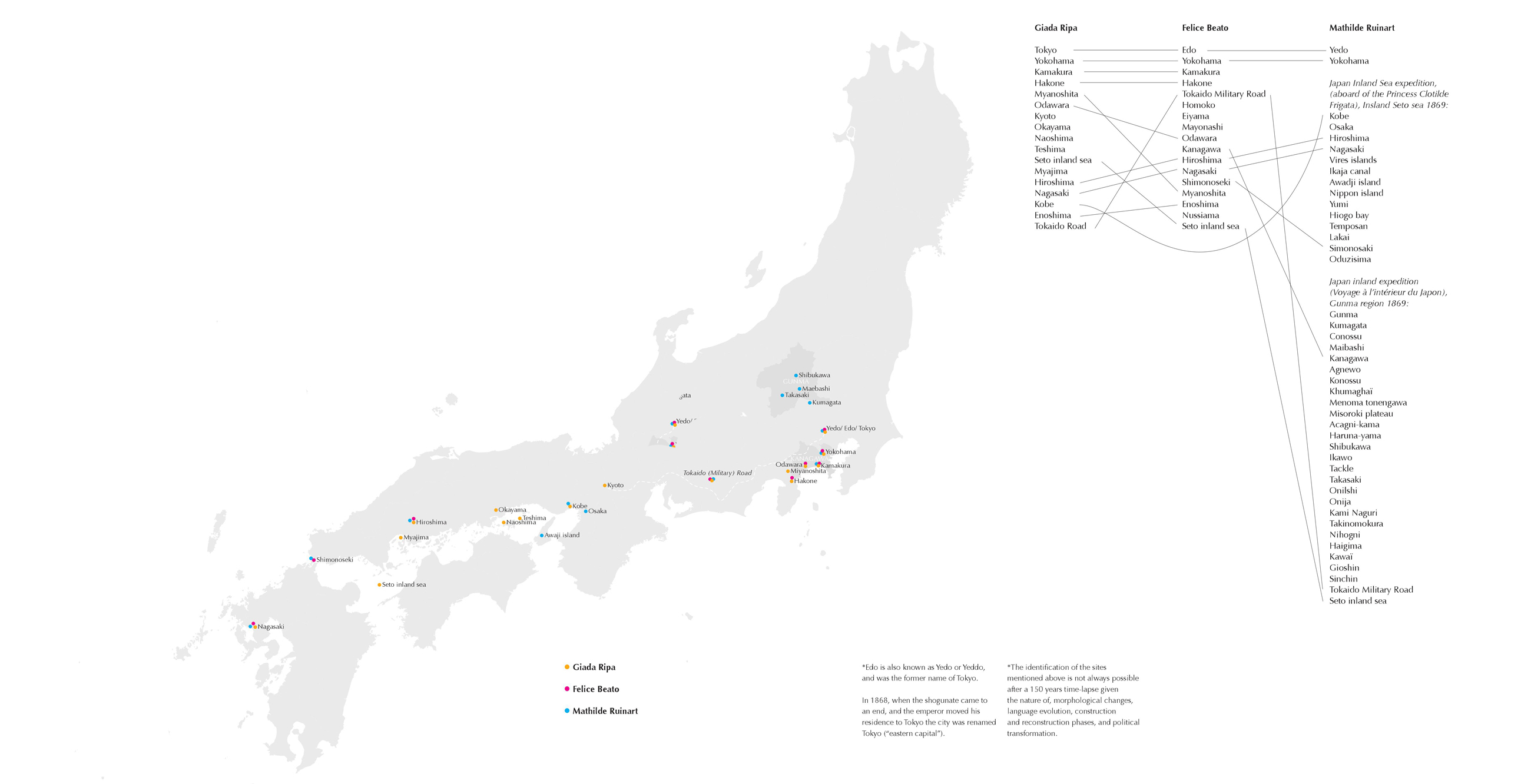
FELICE BEATO, MATHILDE RUINART and GIADA RIPA
A conversation amongst three artists and their western vision of Japan over a 150 year span.
Rummaging through boxes long forgotten in an attic of my family house in the Italian region of Piedmont, I came across an album of old photographs, fifty-three hand-coloured albumen prints of portraits and views of the city of Yokohama and its surroundings, all in pristine condition. The photographer is Felice Beato: the first visual narrator of 1860’s Japanese society.
He established in Japan when it had just opened its doors to the western world in a period during which the Shogun had forbidden access to foreigners except as part of diplomatic missions. For over fifty years, until the early twentieth century, Beato’s photographs of Asia constituted the standard imagery used in travel diaries, illustrated newspapers, and other published accounts, and thus helping shape “Western” notion of Asian society.
